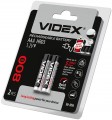Capacity
The rated capacity of a battery is the amount of energy it can store.
This parameter directly determines how long the power supply can operate with a particular load. However, when assessing capacity, there are two things to consider. First, the capacitance rating is usually specified for a specific discharge power. So, for salt and alkaline full-size batteries (see “Technology”), this power is measured in tens of milliamps. But if it is significantly exceeded (on the order of hundreds of milliamps), the actual capacity of the battery may decrease significantly compared to the declared one. Therefore, for example, it is not recommended to use disposable batteries in digital cameras - the power consumption in such equipment can exceed 1000 mAh, and NiMh batteries cope best with such a load. And miniature silver-zinc batteries of the “300” series (SR) are available in two versions - for high and low discharge power; CR series button batteries can have a similar low-power version (for more details on both, see “Size”). More detailed information on discharge currents for different types and sizes of batteries/accumulators can be found in special sources; and in some cases (mainly for lithium-ion batteries) it is directly specified in the characteristics (see “Nominal discharge power”, “Maximum discharge power”).
The second caveat is that the actual energy reserve depends not only on the number of milliamp-hours declared, but also on the operating voltage;...so you can only compare by numbers in mAh batteries/accumulators with the same voltage (in extreme cases, with a similar voltage, for example, 3 V and 3.6 V). However, other comparisons are rarely required in practice.
Charge cycles
The number of charge cycles that the battery can withstand without noticeable deterioration in performance.
The charge cycle refers to the period of time from one complete discharge of the battery to another, when the battery is first fully charged and then discharged to zero. In practice, this method of operation is relatively rare - much more often the batteries are charged under-discharged, and sometimes the process has to be stopped before the charge is replenished to 100%. In addition, the number of charge cycles is usually indicated for ideal operating conditions: a “native” charger, a relatively low load during operation, compliance of the ambient temperature with operating parameters, etc. Therefore, the number of cycles indicated in the specifications is quite approximate, and in practice it is unlikely that you should expect a 100% exact match. Nevertheless, by this parameter it is quite possible to evaluate the durability of the battery and compare it with analogues.

